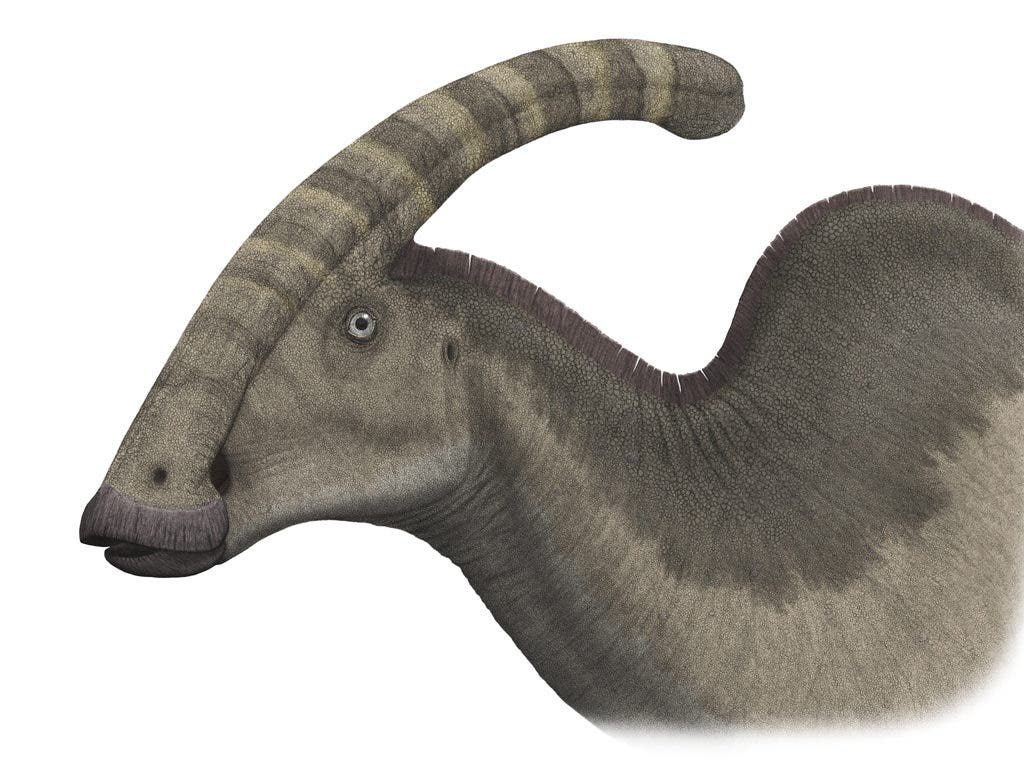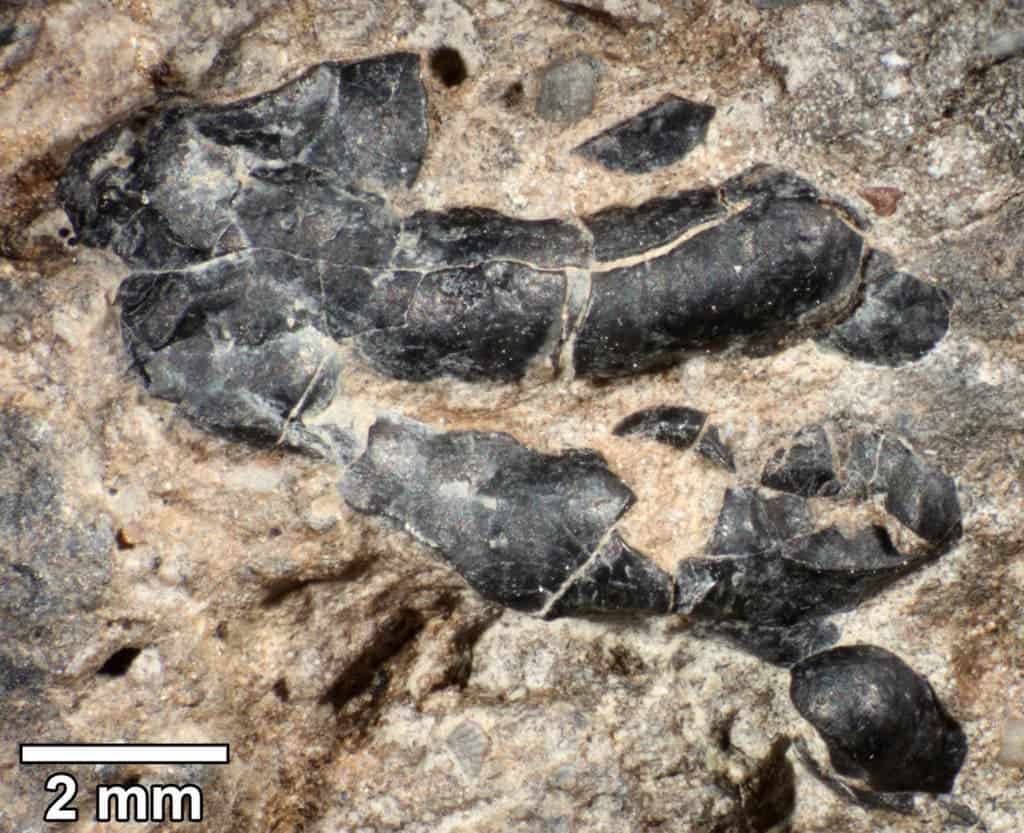The idea of a strictly vegetarian dinosaur has been called into question as researchers found evidence of shellfish eating.

Skin impressions are known in Parasaruolophus, a hadrosaur. The hadrosaurs are known for their particular skull shape. Image credits: Steveoc 86 / Wikipedia.
Our understanding of how and what dinosaurs ate is still simplistic. Largely speaking, we have the plant-eaters and the meat-eaters, but things might be much more nuanced than what we originally thought. Now, researchers have found evidence of Hadrosaurs eating crabs and other crustaceans, a behavior linked to mating behaviors.
Hadrosaurs are a kind of duck-billed dinosaur and one of the most common herbivores of the Cretaceous. Hadrosaur fossils are so common and so well-preserved that paleontologists have been able to calculate their muscle mass, learning that hadrosaurs were very muscular, likely having the ability to outrun predators. The so-called “Dakota” specimen was in such good condition that researchers were even able to analyze its ligaments, tendons, and possibly some internal organs through a CT scan. If anything, “Dakota” is more a mummy than a fossil. But we still have a long way to go before we can say we get hadrosaurs.
Dr. Karen Chin of the University of Colorado, Boulder, US, led a team which discovered and analyzed hadrosaur droppings which contained pieces of crabs and other crustaceans — but only during some times of the year.
“I immediately said, ‘Oh, no, no, it can’t be crustaceans.’ That was my knee jerk reaction,” Karen Chin tells The Two-Way. She’s the curator of paleontology at University of Colorado Boulder’s Museum of Natural History and a co-author of the paper published today in Scientific Reports.
“I was very surprised but I think it reminds us that there’s a lot we just don’t know about the behavior of ancient animals,” she said.

The surface of knobby crustacean shell fragment embedded in fossilized feces samples from Grand Staircase-Escalante National Monument in Utah. Karen Chin/Denver Museum of Nature & Science.
The crustaceans weren’t accidentally ingested. Crustaceans were found in 10 of the 15 studies places, spread over a 20-kilometer area and potentially over hundreds of years. “This was definitely a recurring diet,” Chin says. The droppings also contained wood pieces, which indicates that the crustaceans lived around (probably rotting) logs. They were also “good-sized crustaceans,” measuring at least five centimeters, which indicates that hadrosaurs chose to eat them.
“The fact that these crustaceans were a fair percentage of the width of the skull of the dinosaurs [means] they would have had a choice to reject it if it wasn’t either a desired or acceptable food source.”
The team proposes that the dinosaurs ate the crustaceans to complement their diet during the mating season, when they need large amounts of both protein and calcium, especially during the egg laying period. If this is the case, it could mean that the behavior is also shared by other herbivores, such as the mighty triceratops or the mace-tailed stegosaurus. Perhaps this isn’t really that surprising when you think about. This behavior is also common in today’s herbivores. Usually, they feast on plants but every now and then, they eat something else to complement their diet (either accidentally or intentionally).
“And knowing that at least some of them – we can’t say all of them at this point – but at least some of them occasionally varied their diet to eat more animal products is really intriguing.”
Whatever the case may be, we definitely have to fine tune our idea of herbivore dinosaurs. The classic image of a gentle giant munching on foliage all day long might simply not be true.
Journal Reference: Karen Chin, Rodney M. Feldmann & Jessica N. Tashman. Consumption of crustaceans by megaherbivorous dinosaurs: dietary flexibility and dinosaur life history strategies. doi:10.1038/s41598-017-11538-w









